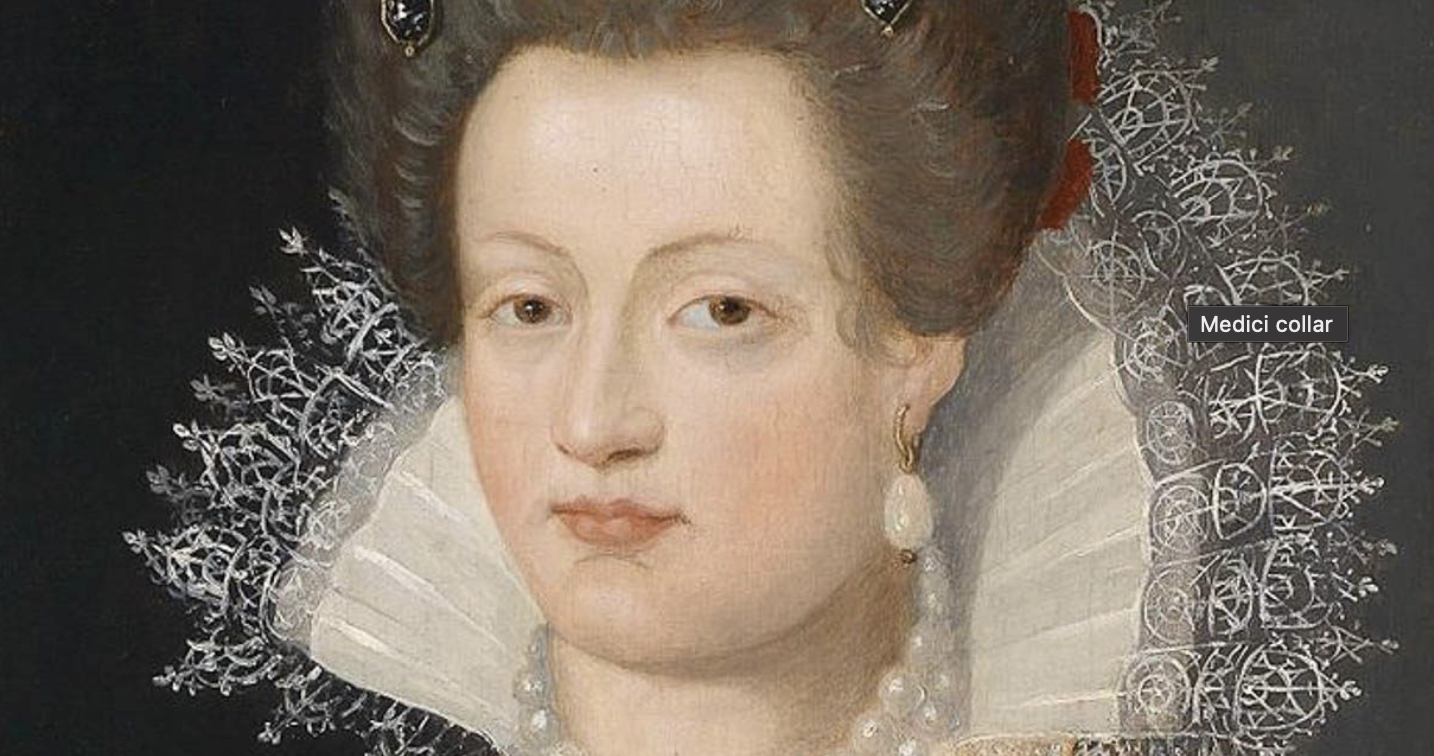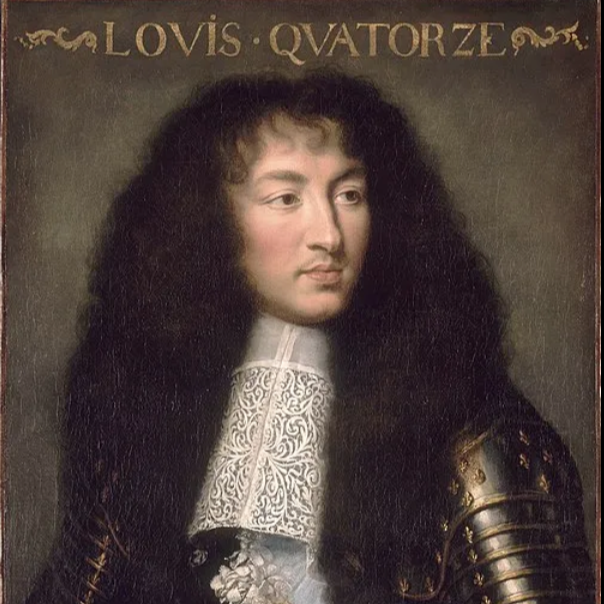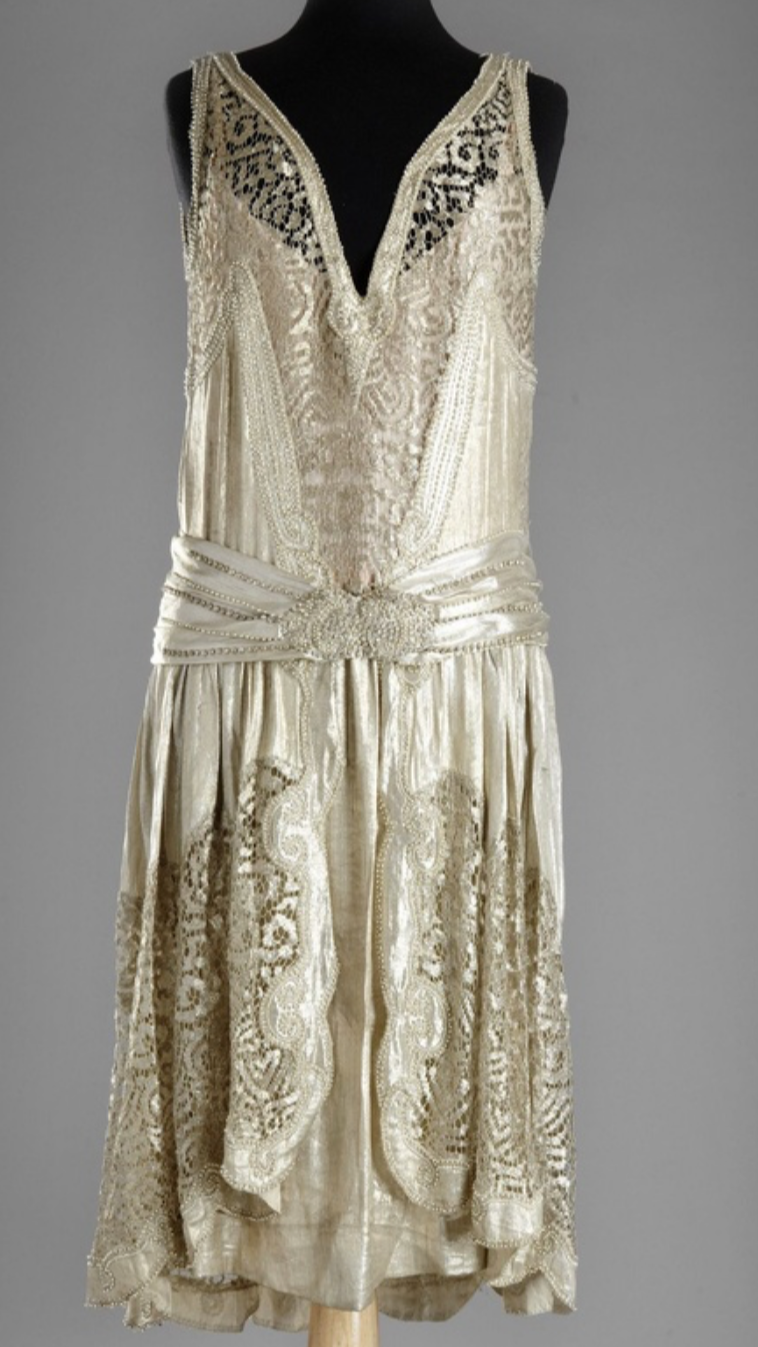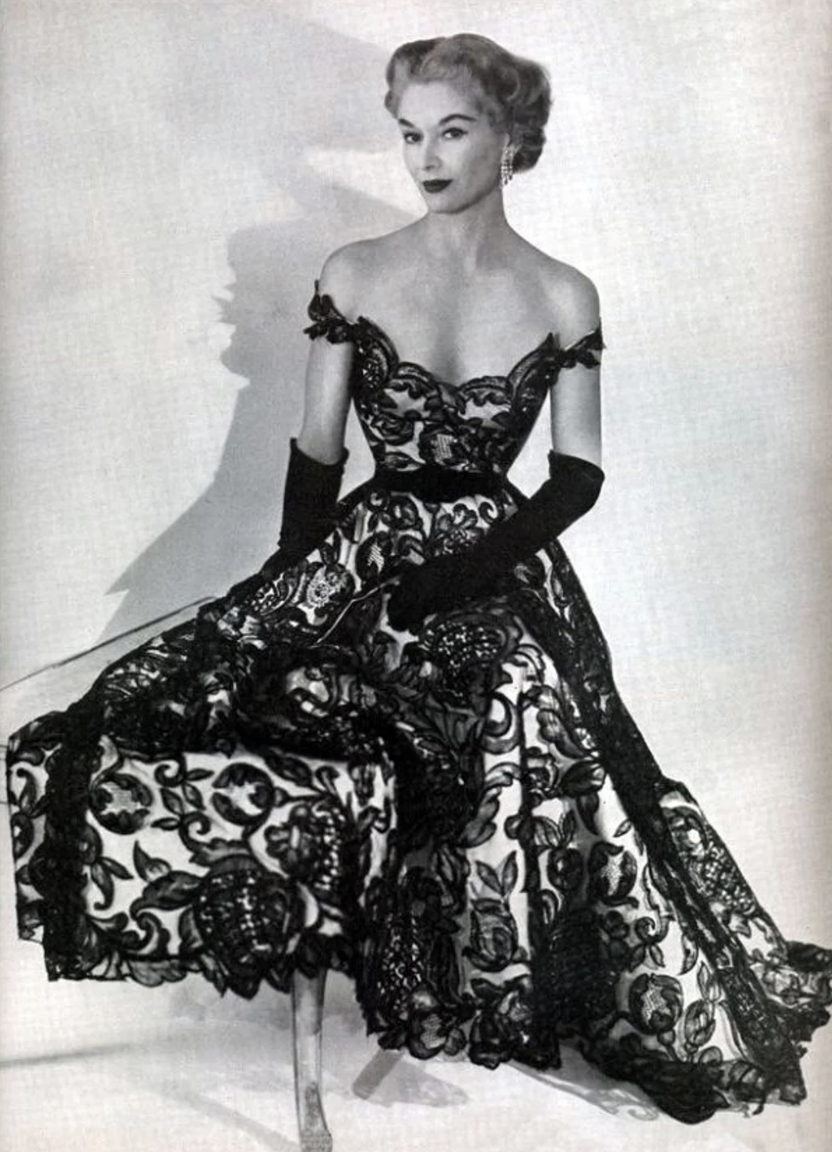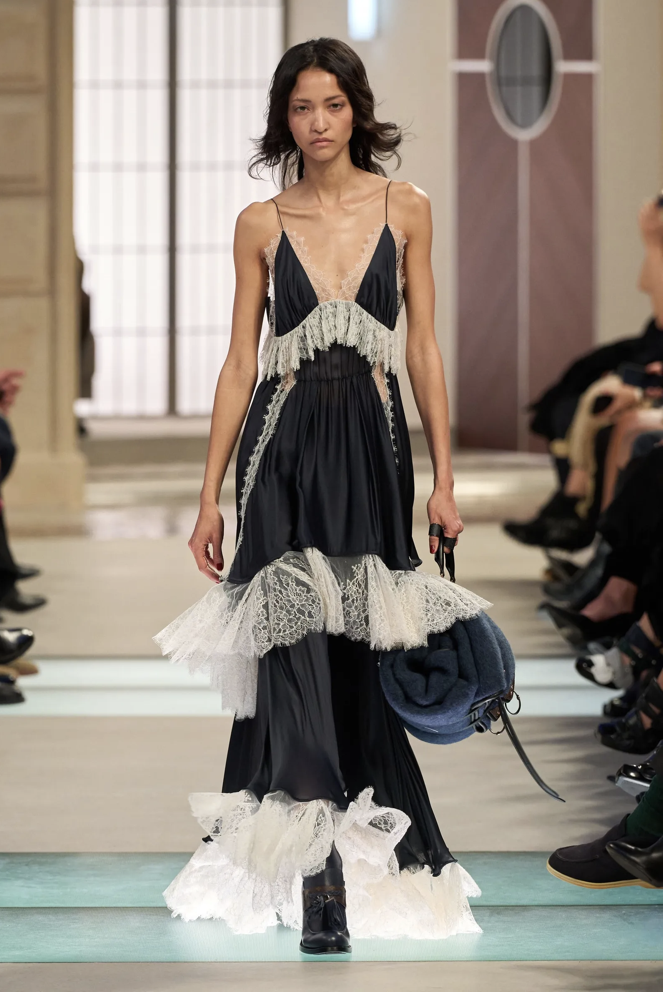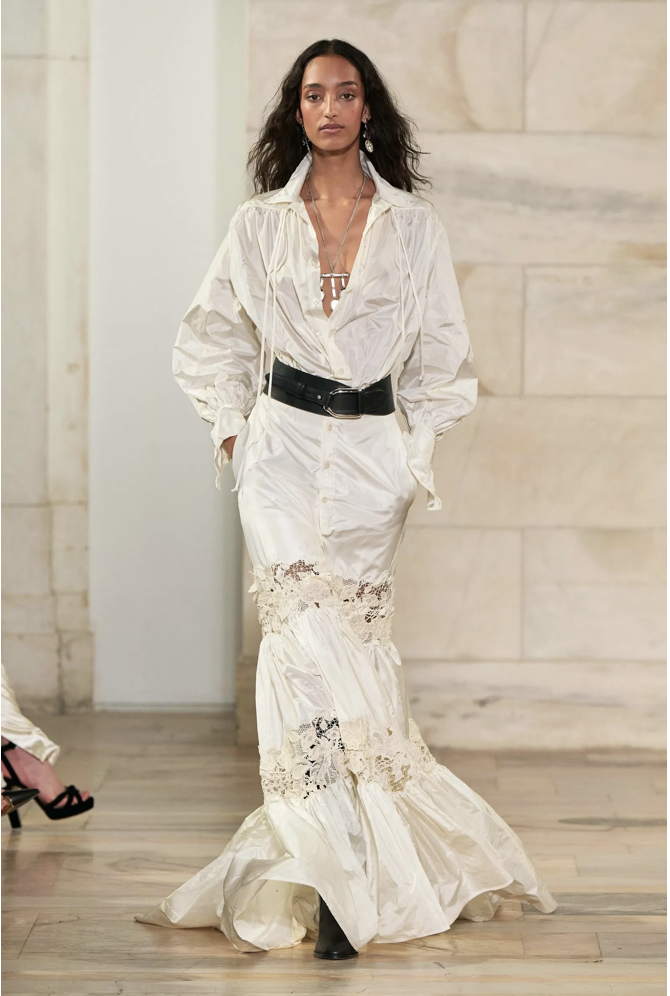Lace: From la chambre à coucher to the Catwalk
For centuries, lace has danced between intimacy and elegance. The question has always lingered—should lace remain in la chambre à coucher (the bedroom), or does it deserve a permanent place in our wardrobes?
The Origins of Lace and Its Allure
Lace first appeared in Europe during the 16th century, with Italy and Flanders (present-day Belgium) at the forefront of its creation. It was unlike any other textile of its time—delicate, intricate, and painstakingly made by hand with needle and thread or bobbins. Unlike embroidery, which was stitched onto cloth, lace was “born in the air,” created from nothing but threads skillfully knotted and looped into patterns.
Because it required such artistry and time, lace quickly became a status symbol. Monarchs and aristocrats draped themselves in lace collars, cuffs, ruffs, and veils, each piece showcasing hours (sometimes months) of craftsmanship. Lace was so coveted that it was regulated by sumptuary laws in certain regions, reserved only for nobility. To wear lace was to announce wealth, privilege, and refinement.
By the late Renaissance, lace had moved beyond simple adornment and became central to fashion design. Portraits from this era—think Elizabeth I of England in her starched lace ruffs or Marie de’ Medici in elaborate lace veils—cemented lace as the ultimate expression of elegance and power. What began in small European workshops soon became a global obsession, with lace traded across courts and continents.
Frans Pourbus de Younger (Belgian, 1569-1622). Portrait of Maria de’ Medici, 1606-1607. Oil on canvas; 214 x 124 cm (84.3 x 48.8 in). Bilbao: Bilbao Fine Arts Museum, 84/86. Source: Wikimedia
Lace in the 17th and 18th Centuries
The 17th century saw lace flourish under the French court. Louis XIV, the “Sun King,” famously adored lace and made it a centerpiece of courtly attire for both men and women. His elaborate lace cravats and cuffs set trends across Europe, and the French lace industry became so prized that Colbert, Louis’ finance minister, established royal lace workshops to rival Italy’s. Wearing lace was not simply about fashion—it was about power, politics, and national pride.
By the 18th century, lace had become synonymous with Rococo extravagance. Picture Marie Antoinette in frothy gowns, her sleeves dripping with delicate Valenciennes or Chantilly lace. Lace trimmings adorned everything from fans to undergarments, symbolizing the frivolity and decadence of pre-Revolutionary France. It was as much about romance as rebellion, delicate yet bold in its excess.
Charles Le Brun, Portrait of Louis XIV, 1661
Oil on canvas
Marie Antoinette with her two eldest children, Marie-Thérèse-Charlotte and dauphin Louis-Joseph - Getty Images
Lace in the 20th Century
By the early 1900s, lace softened Edwardian silhouettes, layered delicately over silks and satins in tea gowns and bridal wear. The 1920s gave lace a flirtatious edge, with sheer panels peeking through beaded flapper dresses.
1920s gold lame evening dress via Stockholms Auktionsverk
The 1950s saw a return to romance, where Christian Dior’s “New Look” often paired lace with cinched waists and full skirts, cementing it as the epitome of postwar femininity. During the 50’s, lace was mostly held for the evening time. Think beautiful lace evening dresses. But the swinging ’60s and free-spirited ’70s redefined lace once again—turning it bohemian, casual, and rebellious when paired with denim and leather.
Evening Gown - 1950’s
woodstock images - getty images
Fast forward to the 1990s, and lace took on an unapologetically bold new role. Gianni Versace sent black lace down the runway in body-skimming, daring silhouettes. It was no longer just delicate—it was dangerous.
Model, Claudia Schiffer in a Black lace a dress during the Versace 1993 Spring RTW Collection
Lace Today: Seduction Meets Strength
Today, lace is experiencing another renaissance. Designers like Valentino, Dolce & Gabbana, and Alexander McQueen are reimagining it in oversized silhouettes, layering it with unexpected textures, and pairing it with sneakers, blazers, and denim. Lace is no longer confined to eveningwear or lingerie—it’s become a wardrobe staple that thrives on contrast.
Louis Vuitton Fall 2025, Photo: Courtesy of Gorunway.com Vogue.com
Ralph Lauren 2025, Photo: Courtesy of Ralph Lauren Vogue.com
Why Lace Endures
The reason lace continues to capture our imagination is simple: it’s a fabric of contradictions. Delicate yet powerful. Romantic yet provocative. Timeless yet always reinventing itself.
Modern women wear lace not as an accessory to femininity but as a declaration of it. A lace slip dress under a tailored blazer. A lace blouse layered with sharp trousers. Even lace details in sneakers and streetwear. Lace whispers of softness, but when styled today, it speaks of confidence and strength.
My Favorite Lace Pieces You Can Add to Your Wardrobe
While the history of lace is rich with queens, couture, and catwalks, it’s also incredibly wearable today. These are my favorite lace staples to bring into your everyday wardrobe:
The Lace Blouse
A timeless classic. Pair a high-neck lace blouse with denim for a chic contrast, or tuck it into a sleek skirt for evening.The Lace Midi Skirt
Effortlessly feminine. I love it styled with a chunky knit in the fall, or with a tank and sandals for spring.The Lace Slip Dress
Versatile and modern. Layer it with a blazer for dinner out, or wear with a leather jacket for an edgier spin.The Lace Bodysuit
A little daring, a little refined. Wear under a blazer or even peeking out of a button-down shirt for subtle allure.The Lace Detail Sneaker or Bootie
A playful nod to lace without going full romantic. Perfect for those who like just a hint.Lace Accents in Accessories
Think lace-trimmed scarves, handbags, or even jewelry with lace-inspired cutouts. Small touches make a big statement.
So, should lace stay in la chambre à coucher? Absolutely not. Lace belongs wherever we decide to wear it—on the runway, on the streets, and everywhere in between.
